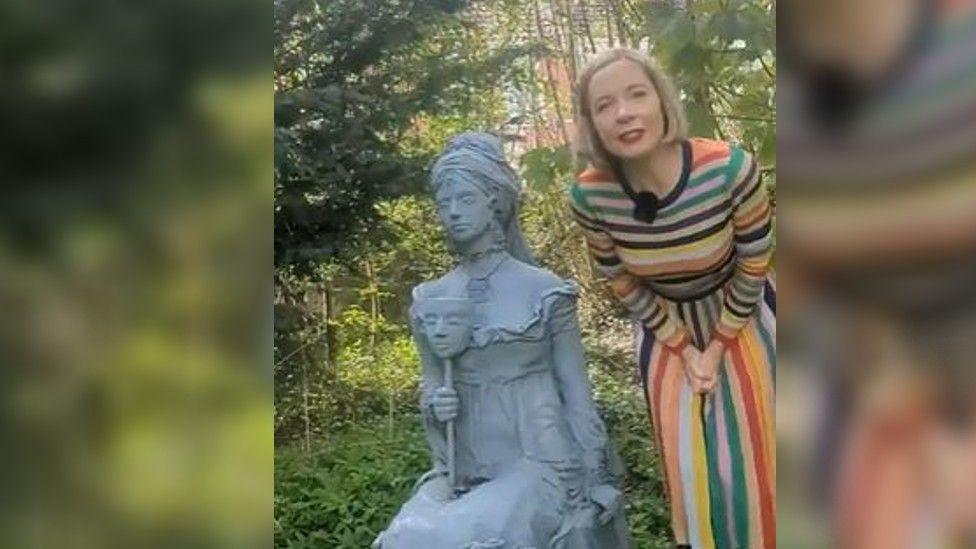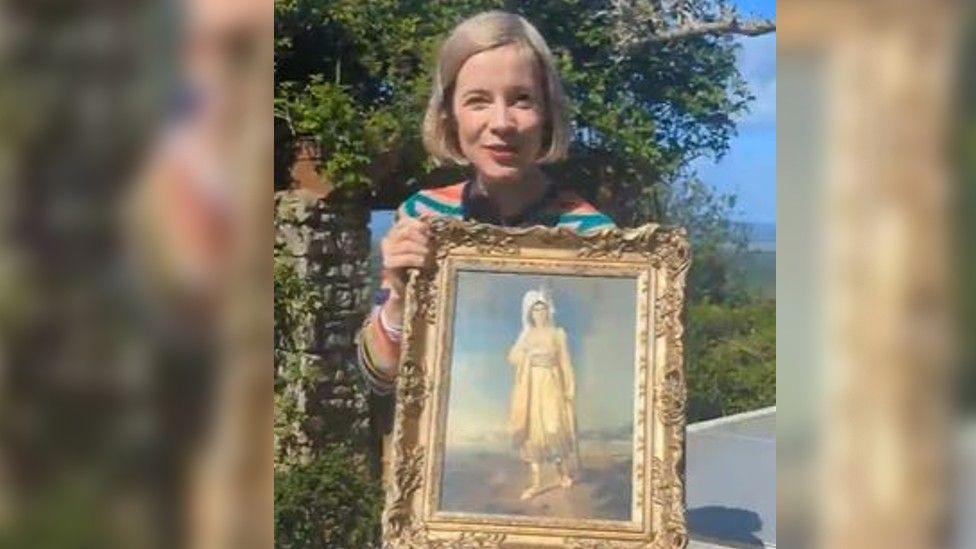The servant who convinced everyone she was royalty
Hear Lucy Worsley explain who Princess Caraboo was.
- Published
Sitting in a city's burial ground is a statue of a famous Victorian swindler who is now being celebrated as a working class icon.
The sculpture of Mary Willcocks has its own account on X, with lots of people still retelling the story of how a cobbler's daughter convinced Bristol's elite she was Princess Caraboo from a far-off island.
During the Victorian period, Bristol was a global city full of travellers, which was key to the success of Princess Caraboo, according to BBC presenter Lucy Worsley, who has recently made a podcast about Willcocks' life.
Willcocks was really a woman from a poor household in Devon. However, she forced her way into the public eye in 1817 by pretending to be royalty from Indonesia.
She first appeared in Almondsbury, near the edge of Bristol, wearing a turban and speaking a language that nobody understood.
"She very cleverly played on the reactions of the people she was encountering to build up this convincing character for herself as an exotic Indonesian princess," said Ms Worsley.

Princess Caraboo is one of Bristol's most famous Victorian swindlers
"She lived her best life - she hobnobbed with the rich and famous of Bristol and she became this centre of attention. It was an extraordinary fraud."
Listen to full story on BBC Sounds
The reason she was able to evade being caught for so long was because in Bristol people were used to sailors and strangers arriving in the city sharing extraordinary tales, added Ms Worsley.
"That was the key to her scam really. She blended into this very cosmopolitan city," said Ms Worsley.
Once Princess Caraboo had been identified as royalty, she was taken to a "big house" in Almondsbury.
There she was seen shooting things in the garden with her bow and arrow and spending time in nature - all things people would expect of an exotic princess.
"She let it be known, not in English because she didn't speak English, but that she had been captured by pirates - only in Bristol could this happen," added Ms Worsley.

Princess Caraboo was able to "live her best life" until she was exposed
She acquired exotic clothing and her portrait was painted and reproduced in local newspapers.
Eventually, the truth surfaced after a boarding-house keeper recognised her from the picture in the Bristol Journal.
Willcocks had been a servant girl around England but had found no place to stay, so she had invented her fictitious language from imaginary and Romani words.
- Published23 September 2024

- Published25 September 2024
